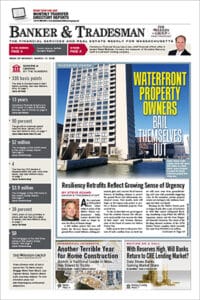
Tamara Small
Throughout the pandemic, questions emerged – is the office dead? Will retail ever be the same? Will residents ever want to return to cities? Now, as we continue to rebuild and recover in the new normal, it’s time we take a look at some of those predictions to separate fact from speculation as the reality of a post-pandemic world becomes clearer.
While certain sectors are leading the way and others are still catching up, the overall projections for the market are optimistic. Just like in 2008, the Greater Boston market’s access to talent, driven by the many top-tier colleges and universities, is our greatest competitive advantage.
Industrial, Life Science Underpin Recovery
The life science sector is critical to the commonwealth’s economic recovery and future growth – and it is joined by astronomical demand for industrial space. For both sectors, available square footage is in short supply.
There has been an explosion of industrial space demand, not just in Massachusetts, but across the country, partially due to a 28 percent growth of national online sales from 2019 to 2021. As production requirements for life-saving medications and technologies expand and e-commerce giants like Amazon seek new industrial space, it is a race to find sites that can be entitled, permitted, and built to meet the needs of the market. As a result, the industrial market will likely continue to expand west in Massachusetts as available space continues to diminish.
Despite the massive demand for industrial, the commonwealth’s thriving lab and life science sector continues to be the primary driver of the market. The statistics speak for themselves. In all of 2020, $10.2 billion in funding was raised by Boston-based biotech companies. For the first five months of 2021, $11.8 billion was raised. One of the highlights? A tremendous amount of activity and demand from groups developing and producing vaccines, as well as growth on the diagnostic side.
With the vacancy rate below 1 percent in East Cambridge, many companies are looking to expand to Watertown, the Seaport, Somerville and beyond. Compressed timelines for occupancy are driving tenant decisions and office-to-lab conversions are becoming more common. Looking ahead, key demands for life science tenants will include additional incubator space, higher lab-to-office ratios than in the past, turnkey buildouts and expanded parking.
Urban Multifamily Roars Back
During the pandemic, the urban multifamily sector experienced dramatic declines in rent throughout 2020. However, in the second quarter of this year, Boston and Cambridge began to see rent growths climb up to pre-pandemic rates. These trends are expected to continue as college students return.
For condominiums, pricing is up 4 percent year over year compared to the single-family market, which has seen price increases of 23 percent and a record-breaking low number of days to offer for suburban homes.
Looking ahead, multifamily developers will be closely following the lab clusters across the commonwealth. Given the projected number of new jobs that will be created, the market anticipates that demand for housing will be high in these areas.
Office Space – It’s Alive!
Capital markets are also strong. Because the local market has historically been a low-leverage environment, there are few distressed assets in Boston. As a result, equity and debt are abundant and there is strong demand from investors to get the capital working in the market and foreign investment remains strong. It is likely that if investors cannot buy, they will need to build, and if they cannot build, there may be a continued increase in joint ventures.
As for retail, the talk of retail losing institutional investment-class status is a myth. Spending and transactions at pre-pandemic levels are returning in the retail space.
Finally, while there has been much speculation about the future of the office, the office is alive and well. Office tenants are resuming their search for space in downtown Boston at the highest levels since March 2020. Sublease space, which had hit an all-time high last year, is down as plans for a Sept. 1 return to office are formalized.
While there is no question that remote work will be far more common than pre-pandemic, the majority of employers recognize the need for employees to be together in person. While offices may focus on more “we space” and less “me space” to promote collaboration and idea generation, it is becoming clear that many workers will be returning to office in the fall in some capacity.
Threats Remain
Despite the good news, threats remain. At a time when there is a record number of jobs open across the country, there is a serious labor shortage due to those jobs remaining unfilled. Additionally, continued regulatory and policy pressure at the municipal and state levels threaten to raise costs and make desperately needed housing and economic development projects infeasible.
Massachusetts’ ability to recover is dependent on talent retention, housing production and continued job growth. We must take this opportunity to build back better.
Tamara Small is CEO of NAIOP Massachusetts, The Commercial Real Estate Development Association.






